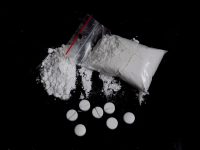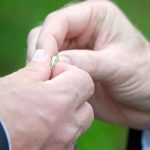W-18 and Fentanyl – Separating Fact from Fiction

On Monday, Tasmanian police put out a warning about a new synthetic drug – ten thousand times stronger than heroin – that could be coming the Apple Isle’s way. Known as W-18, reports state the drug has already been detected on the mainland, and is said to be a synthetic opioid derived from fentanyl.
Australian Border Force (ABF) officers revealed they’ve made several recent seizures of the drug. Talking to the Daily Telegraph last week, ABF commissioner Roman Quaedvlieg said fentanyl “is not the worst of it”, warning that W-18 is.
The authorities on W-18
Quaedvlieg said he’d spoken with his US and Canadian counterparts and had received advice to look out for W-18. He added that local research from state and territory police, as well as coronial inquiries, had shown evidence that the drug is now available in Australia.
W-18 is believed to be one hundred times stronger than fentanyl, giving users a “euphoric pain killing feeling.” Recreational use of the drug emerged two years ago. And W-18 – that’s available in powder or pill form – can’t be detected in the bloodstream.
What is W-18?
However, contrary to what’s been reported, W-18 is not a synthetic opioid.
Dr Stephen Bright is the adjunct research fellow at the National Drug Research Institute. He explained that W-18 is actually one of several analgesic chemicals that were being investigated in the early 80s.
In 1981, researchers at Alberta University developed a series of 32 compounds, and W-18 was the most potent of these. The aim of the project was to create a non-addictive analgesic that rivalled morphine. “It’s unclear why the research was abandoned,” Bright told Sydney Criminal Lawyers®. “But at that time it had only been administered to rats and appeared to show some promise.”
The implications of W-18 in Australia
The drug was patented in 1984, but no pharmaceutical companies chose to licence W-18. Since the patent expired, several companies in China are said to manufacture and sell the drug. According to Dr Bright, the reason Australian suppliers are turning to it is that they can make a hefty profit. W-18 is cheap to buy overseas and can be sold on the local market as heroin at a much higher price.
“Since emerging on the grey market, research has shown that it has no affinity for the opiate receptors,” Bright explained, “so we’re not sure how exactly it is working in the brain.” He warned a danger with W-18 is that if someone overdoses on what’s thought to be heroin, the opioid reversal drug Naloxone won’t work.
The Canadian scene
In Canada, the recreational use of W-18 has been detected for some years now. Four kilograms of W-18 was seized in Edmonton in December last year. But Health Canada has been criticised for repeatedly claiming the drug is an opioid, one hundred times stronger than fentanyl, when there’s no evidence that it is.
Canadian doctors have warned such statements could be dangerous as those who’ve used W-18 may presume they have a strong tolerance to opioids and turn to fentanyl. In response, Health Canada retracted its claims about the chemical makeup and potency of W-18 on June 19 this year.
A recently released University of North Carolina study entitled the Pharmacology of W-18 and W-15 showed that the chemicals have no effect on human or mouse opioid receptors and no relation to fentanyl.
David Kroll, writing in Forbes on July 28 this year, concludes that the warnings that W-18 was an opioid one hundred times stronger than fentanyl stems from a series of drug seizures in western Canada last year where W-18 was found in batches of the drug fentanyl.
Two hundred and seventy Canadian deaths have been attributed to fentanyl. And when the W-18 patent was found to describe the drug as ten thousand times stronger than morphine, this led authorities to claim it was more potent than fentanyl.
Fentanyl in Australia
So it may be that the real threat to Australian drugs users is fentanyl, which has been present on the streets for some years now.
NSW state coroner Michael Barnes said in June this year that a “strong or corrupted” batch of heroin was responsible for a recent spate of thirteen overdoses on the Sydney streets between May 2 and June 3. Australian Drug Law Reform Foundation president Dr Alex Wodak suggested the batch of heroin that led to the deaths may have been laced with fentanyl.
The National Drug and Alcohol Research Centre found that over recent years, prescription painkillers have led to 70 percent of opioid overdoses, with the remaining 30 percent attributed to heroin.
Opioid users had previously been taking Oxycontin intravenously. But when a new tamper-proof form of that prescription drug was rolled out in July 2014, they turned to the more dangerous fentanyl, which is about thirty to fifty times more powerful than heroin.
Drug users extract fentanyl from slow-release patches that are prescribed to people with chronic pain. The problem is the potency of what’s being extracted is unknown.
The case for drug checking
So what impact could W-18 have on the Australian streets?
Dr Bright said, “it’s unclear as Australia has poor monitoring systems.” He believes there is an urgent need for drug checking, which is similar to the harm minimisation approach of pill testing, but with a broader scope as to what can be tested.
A system of illicit drug checking has been in place in the Netherlands since the 1990s. Known as the Drug Information and Monitoring System (DIMS), more than one hundred thousand samples of illegal drugs had been handed in at facilities by 2011.
While in July and August this year, Vancouver’s Insite, North America’s only medically supervised injecting facility, carried out a pilot drug checking program. Insite found that of 173 drug checks undertaken, 90 percent of clients’ heroin contained traces of fentanyl. The ongoing trial comes at a time when a spate of opioid overdoses across North America is increasingly being linked to the synthetic drug.
On drug checking in Australia, Dr Bright explained, “people can test their drugs anonymously, but use the data that is obtained.” He went on to suggest that it could be linked to forensics data, “to get a much better picture of what chemicals are actually in the drugs people are taking.”







